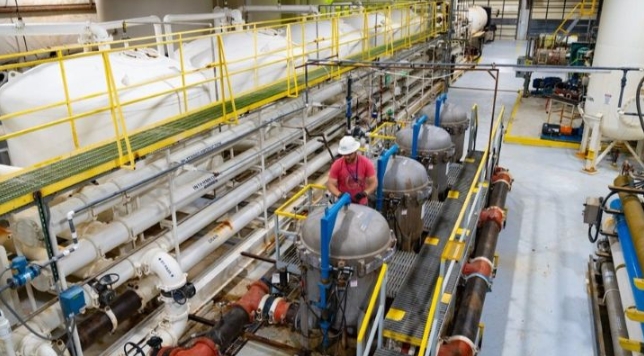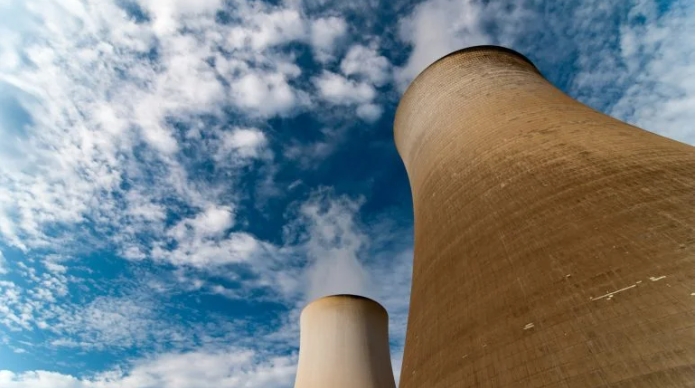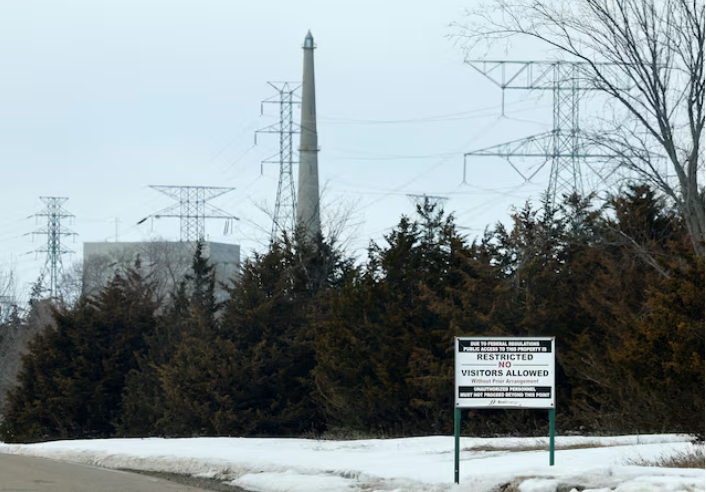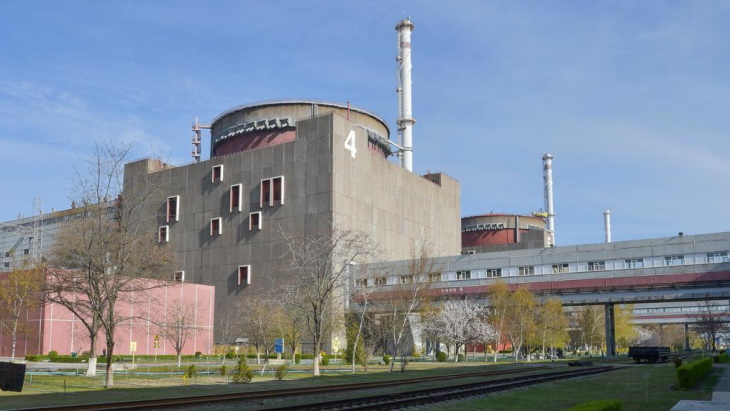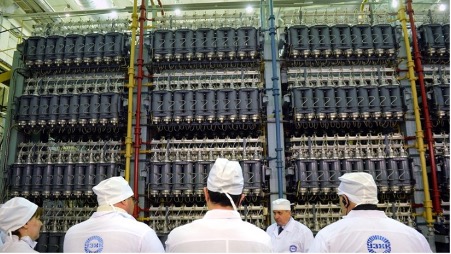
An accident at the Urals Electrochemical Combine (UECC) at Novouralsk in Russia’s Sverdlovsk Region has left one worker dead, according to the plant’s administration. A cylinder containing depleted uranium tails ruptured after a pressurisation failure at the the UECC uranium enrichment facility (part of Rosatom).
UECC, which is the largest uranium enricher in the world, described the incident as “local”, and stressed that the danger has been contained within the affected section. A plant technician, aged 65, died after suffering a “fatal mechanical trauma”, the statement said. Other reports said he was crushed by the lid from the container.
All other staff who were in the section at the time the cylinder burst were evacuated and sent to hospital for medical check-ups. Most have since been released and are “out of danger”, UECC said.
More than a hundred workers who were at the enterprise at the time of the explosion were taken to a hospital in Novouralsk for examination. Doctors were urgently called to work, including those on holiday.
The plant administration gave assurances that the radiation level in the rest of the plant and in nearby areas remains “normal”, and that the radioactivity of the leaked material was even lower than that of regular uranium ore. Rosatom published data on background radiation in Novouralsk, which it said remained within normal limits. The head of Novouralsk, Vyacheslav Tyumentsev, appealed to residents and urged them not to panic.
The cylinder which exploded contained one cubic metre. "The danger of this substance [depleted uranium gas] is low, given the size of the container, said Ilya Yarmoshenko, Director of the Institute of Industrial Ecology. “For others who were nearby, there could be a danger of mechanical damage." He explained that one cubic metre mixed with air would only pose a danger at the work place. "We don't expect any danger to the environment [outside the enterprise]," he said.
Doctor of Chemical Sciences and Academician of the Russian Academy of Sciences Boris Myasoedov told reporters that there is no real danger for residents. "It all depends on the amount that was thrown out, and on its concentration. If this happens in the air, then the substance is instantly diluted, and there is nothing to talk about at all…. It is better not to enter the room where the accident occurred until the atmosphere is in balance…. There is no real danger to residents. People from the room where everything happened, of course, urgently need to be taken out and everything ventilated," he told E1.Ru.
Andrey Ozharovsky, a physics engineer and expert in the Radioactive Waste Safety programme, told Vecherny Vedomosti that toxic substances, not radiation, are the main danger in such an accident. "When interacting with water (for example, in humid air, especially if there is fog), uranium hexafluoride forms uranyl salts and hydrofluoric acid – a very toxic substance that can cause pulmonary oedema and death," Ozharovsky said.
UECC is the world's largest uranium enrichment facility for the production of fuel for NPPs. It accounts for about 50% of Russian and about 20% of global industrial capacities for separating uranium isotopes, and more than 80% of its products are exported. Depleted uranium hexafluoride is a by-product of the conversion of uranium hexafluoride to enriched uranium. It is 1.7 times less radioactive than uranium hexafluoride and natural uranium. It is now used as a secondary uranium source in fuel production for NPPs, as well as in the manufacture of industrial fluorine. It is classified as a nuclear substance and is subject to state controls in Russia.
